The IPNDV met in Bucharest, Romania April 15-19, 2024 in its first working meeting of the year. The agenda provided for plenary and working group meetings Monday through Thursday. On Friday April 19, experts from Sandia National Laboratories held the second in a series of tabletop exercises as part of their Multilateral Information Barrier workshop. This workshop is funded through the Department of State’s Key Verification Assets Fund (V-Fund).
Future work – Phase IV
On Wednesday April 17, the Partners held a working lunch to discuss the future of the Partnership, specifically regarding planning for Phase IV. There was broad support expressed for continuing the IPNDV process.
Specifically, this discussion addressed both potential areas of work for the next phase, as well as working methods. With regard to working methods, the group discussed the value of continuing the practice of alternating working meeting locations (the “traveling circus”) versus holding meetings in a fixed or set of fixed locations like Geneva or Vienna. In the latter model holding meetings in either or both of these cities should maximize the ability of all partners to have their respective experts on nuclear disarmament verification attend. Many delegations lack sufficient expertise or resources to send experts from capital or from their posts in Geneva or Vienna to attend meetings at three different locations throughout the year. By contrast, there was much support for retaining at least some variation of locations. Partners expressed value in allowing the Partner countries to demonstrate their continuing support for the Partnership by hosting a meeting.
The result of the discussion was agreement to consider a mixed approach where one or two meetings remain in a fixed location, and the third meeting (likely the end of year meeting) rotate locations as has been the practice since the beginning of the Partnership.
The group also discussed the organizational structure of the IPNDV and whether there were alternate models that might be useful to consider. Since its inception, the IPNDV has organized into three or four working groups, each with a specific focus. Participants generally agreed that smaller groups were easier for achieving results. But there also is value in full plenary meetings to foster crosstalk and coordination among working groups.
In addressing potential work areas for Phase IV, the participants suggested that, as the IPNDV is about “disarmament” we should start to look beyond the narrower focus of nuclear warhead dismantlement which has drawn the attention of the Partners thus far. It was suggested that one area for additional work is how to verify the non-diversion of fissile material in a global zero world. Some also suggested reviewing past conclusions of the working groups to see if those remain valid or whether there are areas for more in-depth work. This could include reviewing the concepts developed during Phases I – III to check whether these are ‘fit for purpose’ or include some conceptual gaps to be filled.
There was also strong support for developing an orientation program to familiarize newer participants with the past work of the IPNDV. Many experts have expressed hesitation at volunteering to draft papers or participate in sub-groups as they have only been involved with the Partnership for a short time. The secretariat agreed to address this concern and explore the development of such a program.
Working Groups Summaries
The four working groups each had approximately 8 hours of meeting time during the week’s schedule. Summaries of the groups are below.
Reductions Working Group (RWG)
The RWG sought to better understand the nuclear weapons enterprise of Ipindovia, better recognize potential diversion options, and better identify specific verification objectives and appropriate verification measures. Participants continued their work within the three sub-topics: systems-based approaches for verification of the Nuclear Weapons Reduction Treaty (NWRT); diversion pathways analysis; and the processes, procedures, techniques, and technologies (PPTTs) most relevant to the reductions scenario.
The RWG reviewed presentations on the OPCW’s Challenge Inspection mechanism and the PPTTs. On Wednesday, the group engaged in an exercise integrating all three sub-topics and examining the utility of various PPTTs at different stages of NWRT implementation.
The Bucharest meeting, supported by findings from the January 2024 Jülich Workshop, reaffirmed the RWG’s interest in further exploring attractiveness related to various diversion pathways (including technical difficulty, time, security considerations, etc.); identifying potential gaps in the PPTTs; and exploring additional means to integrate the three sub-topics, including through scenario-based discussions and group exercises. As part of this discussion, the RWG drew on an assessment of the attractiveness/risk of different diversion pathways done by the CWG.
The RWG also expressed an interest in working closer with the Technology Track to identify which PPTTs could be utilized to counter the identified diversion pathways.
Limitations Working Group (LWG)
The LWG engaged in several activities that brought useful insights into verification of a limitations scenario. First, the LWG conducted a mini exercise looking at how to implement portal monitors to verify that only legitimate activities were conducted as part of warhead maintenance at Ipindovia’s central nuclear production facility. The group also conducted a portal monitoring exercise, which highlighted the need for future negotiators to have a good understanding of the resource demands of various verification approaches, as well as the advantages and limitations of different approaches.
The LWG then analyzed potential diversion pathways and their detectability at different types of facilities. Participants found that inspectors would likely more easily detect warhead diversion at former military sites once cleared out, compared to other facility types, so a verification regime could use simpler verification measures at those sites. One potential way to detect undeclared sites could be through warhead inventory – if there are missing warheads, or transport of undeclared warheads, those events would be detectable. Finally, detection of diversion at declared sites with active warhead inventory will be most difficult and require the most complex and sophisticated verification measures.
Finally, the LWG developed a Concept of Operations (CONOPS) for the inspection of a former airbase to verify that no nuclear weapons had been introduced into this facility. Working through the CONOPS together led to important conversations about assumptions and various challenges to developing effective verification mechanisms. It also highlighted some modifications to be made to the CONOPS template.
As a next step, members of the LWG will work to combine the 3 existing papers on diversion pathways into one paper, develop a verification objective list in the limitations scenario for use in future CONOPS, complete a CONOPS for mobile ICBM bases, and develop a paper comparing challenge inspections from different verification regimes drawing on prior work.
Concepts Working Group (CWG)
The CWG emphasized the significance of Step 14, verification of the disposition of dismantled warhead components. It also considered how to organize effectively for future work. Other discussions addressed the complexities of defining baseline verification strategies, exploring diversion pathways, and considering the interplay between trust, confidence, and diversity of inspection teams in verification.
A joint session between the CWG and Technology Track (TT) underscored the importance of not over-emphasizing the uses of technology too early in the overall verification process. The session also emphasized that, particularly with regard to verification of disposition (and the hand-off to safeguards of materials no longer with classified aspects), there is value in involving safeguards experts relatively early. Participants examined various methods and technologies for measurements, including absence measurements, attribute and template measurements of nuclear material, and other strategies for monitoring & verification. The tension between time constraints and measurement quality, as well as the role of human interpretation in data analysis, emerged as key considerations.
Efforts were made to identify mutual areas of interest between the CWG and TT, including exploring techniques to improve confidence in measurements, addressing the human factor in verification processes, and developing an “all-weather” verification strategy resilient to political pressures. Confidence-building measures, including cultural bias training and challenge mechanisms, were also discussed as essential components of an effective verification regime.
The CWG concluded with a focus on potential deliverables for Phase III and beyond to Phase 4, and a commitment to further exploration and collaboration in pursuit of effective concepts and mechanisms.
Technology Track (TT)
The TT held a joint session with the CWG to address considerations relevant to Step 14. Following this joint session, the TT met separately to continue these discussions, exploring different technical approaches to the verification of Step 14. During this time, the TT focused on a boundary vs process monitoring approach (the former focused on ensuring no diversion from within a given boundary area in which disposition activities were taking place, the latter on directly monitoring the process involved in transforming classified nuclear weapon materials into unclassified materials). Its initial conclusions found that a combination of the approaches is likely most useful for Step 14.
The group also considered Portal Monitoring requirements at different steps and will provide initial technology recommendations to the LWG ahead of the June working meeting. The respective groups also collaborated on a brief session looking at the human and technical aspects of confidence in verification.
Finally, the group received member updates, which included presentations on the Belgian Measurement Campaign (BeCamp2) and an upcoming Canadian measurement campaign this summer.
The TT looks forward to additional collaboration with the other IPNDV working groups in Geneva on a number of nuclear disarmament verification topics, such as advancing the assessments on Step 14 and general approaches to confidence in verification.



